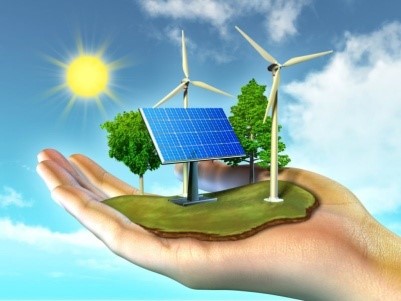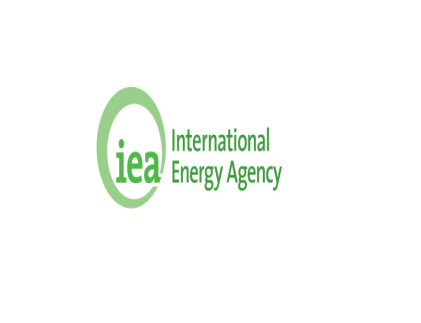
IEA RELEASED INDIA ENERGY OUTLOOK 2021
IEA RELEASED INDIA ENERGY OUTLOOK 2021

Recently, the International Energy Agency (IEA) has released the India Energy Outlook 2021 Report which explores the opportunities and challenges ahead for India as it seeks to ensure reliable, affordable and sustainable energy for a growing population. The India Energy Outlook 2021 is a new special report from the IEA’s World Energy Outlook series.
THIRD LARGEST ENERGY CONSUMER BY 2030
India will make up the biggest share of energy demand growth at 25% over the next two decades, as it overtakes the European Union as the world's third-biggest energy consumer by 2030. Presently, India is the fourth-largest global energy consumer behind China, the United States and the European Union. India's energy consumption is expected to nearly double as the nation's Gross Domestic Product (GDP) expands to an estimated USD 8.6 trillion by 2040 under its current national policy scenario. Prior to the global pandemic, India’s energy demand was projected to increase by almost 50% between 2019 and 2030, but growth over this period is now closer to 35%.
Industrialization is a Major Driving Force: Over the last three decades, India accounted for about 10% of World Growth in Industrial Value-added [in Purchasing Power Parity (PPP) terms]. By 2040, India is set to account for almost 20% of Global Growth in Industrial value-added, and to lead global growth in industrial final energy consumption, especially in steelmaking.
Reliance on Imports: India's growing energy needs will make it more reliant on fossil fuel imports as its domestic oil and gas production has been stagnant for years despite government policies to promote petroleum exploration and production and renewable energy. Rising oil demand could double India's oil import bill to about USD 181 billion by 2030 and nearly treble it to USD 255 billion by 2040 compared with 2019.
Oil Demand: India’s oil demand is seen rising by 74% to 8.7 million barrels per day by 2040 under the existing policies scenario. A five-fold increase in per capita car ownership will result in India leading the oil demand growth in the world. Its net dependence on oil imports - taking into account both the import of crude oil and the export of oil products - increases to more than 90% by 2040 from the current 75% as domestic consumption rises much more than production.
Gas Demand: India will become the fastest-growing market for Natural gas, with demand more than tripling by 2040. Natural gas import dependency increased from 20% in 2010 to almost 50% in 2019 and is set to grow further to more than 60% in 2040.
Coal Demand: Coal currently dominates India's electricity sector, accounting for over 70% of overall generation. Coal demand is seen rising to 772 million tonnes in 2040 from the current 590.
SIGNIFICANCE OF RENEWABLE ENERGY

- Renewables Energy Resources Demand: India's share in the growth in renewable energy is the second-largest in the world, after China.
- Sustainable: Energy generated from renewable sources will be cleaner and greener and more sustainable.
- Employment opportunities: Inclusion of a newer technology simply means more employment opportunities for the working population of the country.
- Market assurance: From the economy point of view, renewable sources provide the market and revenue assurance which no other resources can provide.
- Power supply: Providing 24*7 power supply to 100% of the households, sustainable form of transports are some of the goals that can only be achieved through sustainable power that comes from renewables.
INTERNATIONAL ENERGY AGENCY

The International Energy Agency is an autonomous Intergovernmental Organisation established in 1974 in Paris, France. IEA mainly focuses on its energy policies which include economic development, energy security and environmental protection. These policies are also known as the 3 E’s of IEA. India became an Associate member of IEA in March 2017 but it was in engagement with IEA long before its association with the organization. Recently, India has inked a Strategic Partnership Agreement with the IEA to strengthen cooperation in global energy security, stability and sustainability. The World Energy Outlook Report is released by the IEA annually. IEA Clean Coal Centre is dedicated to providing independent information and analysis on how coal can become a cleaner source of energy, compatible with the UN Sustainable Development Goals.
CONCLUSION
As the world seeks ways to accelerate the pace of transformation in the energy sector, India is in a unique position to pioneer a new model for low-carbon, inclusive growth. If this can be done, it will show the way for a whole group of energy-hungry developing economies, by demonstrating that robust economic expansion is fully compatible with an increasing pace of emissions reductions and the achievement of other development goals. India is already a global leader in solar power, and solar combined with batteries will play a massive part in India’s energy future. But India will need a whole host of technologies and policies to chart this new path. As new industrial sectors emerge and clean energy jobs grow, India will also need to ensure that no one is left behind, including in those regions that are heavily dependent on coal today.
QUESTIONS (1-5)
Q.1 Renewable energy often displaces conventional fuel in which of the following areas?
- Space heating
- Transportation
- Electricity generation
- All of the above: ANSWER
Q.2 Which of the following organisations or agencies has recently released the India Energy Outlook 2021?
- International Energy Agency (IEA): ANSWER
- International Atomic Energy Agency (IAEA)
- International Renewable Energy Agency (IRENA)
- None of the above
Q.3 Consider the following statements.
- Coal currently dominates India's electricity sector, accounting for over 70% of overall generation.
- India will make up the biggest share of energy demand growth at 25% as it overtakes the European Union as the world's biggest energy consumer.
- I is correct
- II is correct
- Both I & II are correct
- None is correct
Q.4 International Energy Agency mainly focuses on its energy policies which is also known as 3 E’s of IEA. Which of the following is not amongst them?
- Economic development
- Electricity Generation: ANSWER
- Energy security
- Environmental protection
Q.5 Which of the following given statements is incorrect in the context of the above-mentioned passage?
- India became an Associate member of IEA in March 2017 but it was in engagement with IEA long before its association with the organization.
- India will become the fastest-growing market for Natural gas, with demand more than tripling by 2040
- India's share in the growth in renewable energy is the third-largest in the world, after USA & China: ANSWER
- None of the above












0 Comment